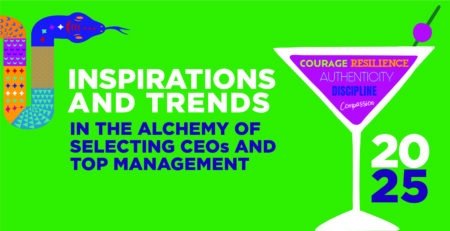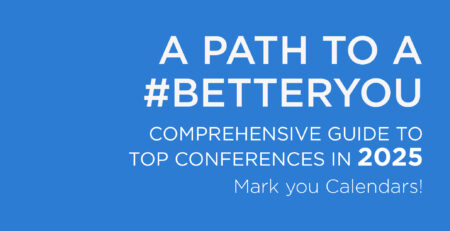Interviews about HR Strategies by Anderson Willinger
Talent Production in 2013
65% of Managers struggling with number of Talents in their organizations
25% of Managers support development of Talent Pools in the organizations
20% of Managers confirm proven results on Talent Programs within their organization
Based on the latest studies of Economist Intelligence Unit, Generation Y those born between 1977 and 2005 will have an average of 15 jobs by the age of 40.
Based on Anderson Willinger, executive search, studies provided in 15 countries in the Region of CEE, CIS and Central Asia, the Generation will behave more as entrepreneur spirit while being employed, not having so strong tights to the Companies as generations before. Large companies are increasingly creating their own universities to train their staff from around the globe and develop more close spiritual tights. In 2013 after significant movement in educational systems, we expect solid growth of talent in Poland and Ukraine with decreasing ranking of Russia with lower quality of its compulsory education. China instead with positively developing high education quality and due to size of the population will have tremendous talent pools to export.
Is it really a War or we are overestimating the situation?
Anderson Willinger, executive search experts, asked 3 Strategic HR Leaders operating cross-borders about their experience.
Petr Janák, Home Credit Group, Executive Officer Human Resources Chairman of the Board
Do you agree with above statement that “consumer behaviour and cherry picking” exists in the employment market, and how can you work with it?
I might be going against the current trend, but I do not believe that the situation on the labour market has changed fundamentally in recent times – the battle for talents has lasted practically forever. It has always been and is difficult to find the right people for the right positions, who have the potential to develop and bring the company added value, and to tune their short-term and long-term expectations with the company’s objectives. The only difference is that today, everything is faster, we have more sophisticated instruments and a lot more is being written and said about “Talent Management,” which is a good thing. It enables better description of the area of working with particularly prospective employees, focusing greater attention on them and particularly thinking about what is really important – why talents are so essentially to a company, how and where to find them and how to work with them.
Likewise increasingly important is the building of an appropriate and consistent image of the company as an employer. This helps motivate precisely the type of people the company needs. Candidates know what to expect from the given employer, what their roles, requirements and reward will be. However, this image should always be sober and based on real, not imagined, foundations. In the opposite case, the unpleasant disappointment arising from unfulfilled expectations merely provokes the faster departure of newly hired talents.
How do you balance Talents’ expectations (in order to retain them on a long-term basis), and their needs from your business (often short-term)?
As I have already mentioned, the most important and difficult task is to find talents – that is, to identify them and uncover their potential. However, this requires careful everyday work, where instruments and methods serve only as a guide to help stipulate criteria. The essential thing is to pinpoint what or who is a talent for you, what working with talents brings your company, and what makes it important for business development. The charm of talent management is that you select a specific individual from among the masses and then handle him very individually, which you cannot afford to do on a large scale. Hence, once you have identified a small group of the best-endowed among several thousand employees, two thirds of the work are already finished. This is followed by the aforementioned individual work with each talent separately, with the aim of developing his skills and providing him with new opportunities for growth.
Can you identify the major similarities and differences in Talents’ expectations in CEE and Western Europe?
It is interesting how similar the current situation in Eastern Europe is to the Nineties in the Czech Republic. Particularly the nations of the former Soviet Union (but also countries in South-East Asia) are typical “emerging markets” with everything that goes along with it, meaning even the staff situation. There is a typical very high demand for capable employees, particularly managers, combined with a lack of these people and some degree of their “immaturity.” Candidates are hired for important positions, who would never get such chances in the West. They merely have to fulfil some basic conditions – language skills, basic awareness of the given field, adequate education and ability to work with a PC, and they have unlimited options. The rapid fluctuation of employees combined with steep career development and growth of financial evaluation is quite common. The problem is, however, that this condition is considered standard by employers and employees alike. In short, the existence of a still small and unrefined pool of at least slightly capable candidates has an impact. On the other hand, western markets are much more mature, stable and predictable in the labour market area. It will be instructive to see further developments in Eastern European and Asian countries, not least with respect to the current financial crisis.
In which direction do you see firms changing their expectations towards Talents?
In short, HR functions are not changing that dramatically, but HR specialists are closer to the business, can better define what the company needs from HR and orient themselves better in the actual business of the company they work for. Previously, a lot of work was done intuitively, followed by an enchantment with various instruments (assessment centres, sophisticated HR systems, etc.) where methods were mistaken for results, through to this day when we are trying to look back and find answers to the most important questions – what do we need, why do we need it, who are our talents and how do we recognise them. Although methods and instruments are still important, companies are trying better to define the conditions that will help them to better identify prospective employees in the area of working with talents. It is not enough simply to be able to measure the individual parameters; it is more important to know what they are and understand that they can be very different for different companies.
How will you manage “Talent Procurement” in five years from now, concerning Senior Management positions?
I expect, and it is also my objective, to fill management positions much more from our own resources – this means that we will have a sufficient number of excellent talents in our portfolio, which we will be able to use and develop further. At present, however, we rely heavily on external candidates, especially because we are a fairly young and expanding company that is still creating its talent pool. What we have already succeeded in achieving is the rotation and movement of our employees across the entire group. Also, it is not unusual, particularly in the higher management, for one person to hold a local and central (group) function at the same time.
Can you offer any thoughts on how effective and modern Talent-oriented HR functions will look in five years from now?
In general, there will be no revolutionary events in HR – five years is a relatively short time for any fundamental changes in HR. HR specialists will continue to carry out the same activities, although they may have better methods and better process descriptions. I hope the greatest difference will be evident in the closeness of links with business and vice-versa, when HR will become its integral part. The discussion will move from a “technical” level to the business sphere, meaning that HR will gradually move its attention from methods towards seeking answers to questions not of how, but why and what. I am really looking forward to the time when there will be no more lengthy articles and conferences on the topic of “HR business partners,” because both HR and business managers find this connection entirely normal and natural, and will have no need to discuss this particular area.
Agnieszka Donimirska Sodexo HR Director CEE
Do you agree with above statement that „consumer behaviour and cherry picking” exists in the employment market, and how can you work with it?
In the era of aging European societies, where Generation Y has arrived on the market place, there is little doubt that the “War for Talent” is escalating, and this is no longer just a marketing slogan. In this context, it is a very accurate and apt to identify this as “cherry picking behavior” on the labor market. Sodexo approaches this situation by differentiating itself, by letting the labor market see that the company truly lives its values and ethical principles (Team Spirit, Service Spirit & Spirit cheap NFL jerseys of Progress) on a day-to-day basis. For instance, when it comes to external recruitment we are probing candidates, not only how good they are in their core technical competencies, but also who they are as people – do they share similar values to ours? We believe that you can only maximize success when you and your stakeholders are truly aligned: we select and work with partners who respect and understand the importance of our way of doing business and who can “represent” us in front of our clients, customers, candidates… Respect for an individual DOES matter to us, and quite often in the eyes of the candidates and employees “this does make a difference”.
How do you balance Talents’ expectations (in order to retain them on a long-term basis), and their needs from your business (often short-term)?
I am privileged to work for a company who is developing and growing very fast, both organically as well as externally. This favorable situation is creating many professional opportunities, so the internal market-place is quite attractive. After all we do say „You join the Company and you leave your Manager“. I personally believe its very true. Sodexo invests heavily in growing its managers who are, by far, the key players when it comes to Employee s‘Engagement. In addition, I believe that our specific nature of being an international company, but managed locally, makes us unique and has a huge impact on the way we do the business. In tangible terms, this translates in country teams being fully empowered to build and drive the company locally. It has a significant meaning for the profile of candidates we are hiring and the professional opportunities we can offer – not only at the international is level but, most importantly, at the country level. Last, but not least, Sodexo supports diversity and privileges international exposure. A year ago my Paris-based CEE Team of 7 people included one cheap NBA jerseys British, one Italian, one Romanian and one Polish (myself☺) person!
Can you identify the major similarities and differences of Talents’ expectations in CEE and Western Europe?
There are a lot of similarities as Talents today are managed globally (otherwise any Talent Review process would not make much sense), and, therefore, very quickly we have the situation in which there are similar expectations regardless the region or country. I would distinguish, however, one important difference: CEE working culture often associates itself with rapid success and immediate recognition. The fast growing and dramatically new market opportunities of the 90’s in the CEE region offered swift professional growth for many young people (who, unfortunately, were often not ready to take-up this challenge), and created an “expectation” of a “quick” and “easy” promotion. “Those days are now over”, but some people do not seem to be willing to acknowledge this reality.
Generally speaking, the CEE region is perceived as a reservoir of very good, qualified specialists. What we are missing, however, are managers who are able to grow and engage ideas their own teams.
In which direction do you see Firms changing their expectations towards Talents?
Actually I would allow myself to rephrase this question… „How will the new context make companies change their expectations towards Talents“? The shortage of quality workforce (and within this Talents) is such that it will force companies to reevaluate their „traditional“approach as to where and how to attract these people. Michel Landel, CEO of Sodexo, is making “men and women” diversity a specific strategic choice as part of the company’s future. In addition, I believe that many of today’s companies are not yet ready to welcome the Generation Y – but this is the new reality and it has to be taken into consideration.
How will you manage „ Talent Procurement “, in five years from now, concerning Senior Management positions?
We are fully aware that continuing to do what we currently do “well or very well” is not enough in today’s fast-changing environment. Sodexo is committed to developing its key assets: its staff. As such it is preparing and working on several new strategic initiatives that will help us manage our “Talent Pipeline” even more effectively. We have just launched a new program called “Employee Value Proposition”, and soon in Sodexo Pass there will be a program dedicated to “Young Talents”. We do have many more other projects and ideas, but I believe would not be appropriate to share these at this point in time.
Can you offer any thoughts on how effective and modern Talent-oriented HR Functions will look in five years from now?
I would like to share with you a simple but powerful model of HR Competency (drafted by the RBL Group, http://www.rbl.net/) that I believe well reflects the modern HR Function.
As a foundation you need to build your and functional/HR credibility, as quite often even this basic, but crucial element is missing. (In other words, you need to be perceived as a Credible Leader, a role model. High performing HR professionals are respected, listened to and act proactively (have a point of view, are willing to challenge assumptions, make things happen).
The second layer consists of Systems & Processes that touch Operational Excellence: HR work on a day-to-day basis. High performers need to have the tools and support to effectively manage people inside an organisation. You may have, however, an efficient, operational executor working in a well-structured and processed environment, but from an employer’s point of view this may not be fully effective if this is not accompanied by a sound business understanding. HR high performers play the role of Business Allies as they seek to understand the internal business, as well as the external market and industry factors – and through this are able to propose and adjust HR actions/strategy accordingly.
The final layer is Organisational Capabilities – an issue that the modern HR function cannot afford to miss. This encompasses Talent Management & Organisation Design. HR high performers are effective business partners in putting in place new organizational solutions as well as anticipating, finding and growing the Talents necessary to meet the company’s requirements of today
and tomorrow. When discussing evolving organisations, we should remember the crucial role HR plays as a Culture & Change Steward, both through its support of change, attitude & actions, as well as itself initiating improvements in systems and practices within the HR function. Naturally, included in this is the very important “attitude” of impacting and stimulating others through a “coaching-like-manner”.
Fundamentally, a modern HR Function should be considered as a Strategy Architect – a business partner in the building of winning strategies: match people and organisational practices to meet competitive requirements.
My personal observations make me think that the above described model in many cases today rather stays “on a paper”. Quite often HR Departments are failing in building first (Relationship) and third (Organisational Capabilities) layer. I would say therefore that in the next 5 years (or even in a longer time perspective) HR Function should continue to grow in order to assume her strategic role in the organisations.
Thomas Kuenchen Adidas Senior HR Manager, Area East
Do you agree with above mentioned statement of „cherry picking of Consumer behavior” on the employment market and how to work with it?
It’s a natural thing that well qualified candidates have a wider scope of opportunities to choose from. Still companies will also in the future make sure that they decide on suitable candidates for their organizations without making essential compromises. As the labor market is getting tighter it’s important to offer candidates an attractive employment package which consists out of a competitive remuneration, responsible and challenging duties, career perspective in terms of development opportunities and a stimulating and inspiring working environment.
How do you balance Talents’ expectations (in order to retain them on a long-term basis) and Talents’ needs from your business (often short-term)?
Transparent communication tecnica and information towards not only but specifically talented employees within an organization is key. Expectations need to be openly discussed in order to align and come to a common understanding. After the identification and verification of Talents within an organization individual development plans and respective training measures need to be defined. In a dynamic and constantly changing working environment it’s vital to stay flexible and open towards new opportunities which are sometimes not in the scope of the original planned career track.
Can you identify the major similarities and differences towards Talents expectations in CEE and Western Europe?
Talents would like to be challenged, developed and rewarded independent from the country they work in. Contribute to valuable projects, readiness to work with different cultures and the ability to quickly adopt towards new circumstances are common success factors for Talents in CEE and Western Europe. The importance of a proper talent and succession management has not been on the radar of the CEE Management adequately in the past. Especially in smaller organizations Talent Management was perceived as irrelevant due to limited career opportunities. Changes in the field of organizational development and cross-border approaches do nowadays help the organizations to create awareness and support talent development in CEE.
In which direction do you see the Firms changing their expectations towards Talents?
Due to the tight labor market situation the company expectations in terms of performance and results towards the Talents might even increase based on higher investments into this group of employees. But in general the spectrum of expectations and values remains unchanged. Company loyalty, sustainable business improvement, high motivation and performance, strong engagement as well as excellent functional, personal and leadership skills are and will be on top of the expectation list.
How will you manage „ Talent Procurement “, five years from now, concerning Senior Management positions?
We do and will continuously work on internal training and development programs in order to secure that our Senior Management positions can be filled via internal candidates. The benefit is twofold. We can retain strong and motivated profiles within our company by offering them career perspective. On the other side we assure valuable knowledge and expertise remains within the organization and is available for the business library.
Can you offer any advice on effective and modern Talent-oriented HR Functions, five years from now?
Future HR should ensure that the different functional HR areas, especially the pillar which is working on Talent Management, are closely linked in order to guarantee a network with a minimum loss of information and highest level of alignment. As so called Talents are just one part of organizations they should not forget about their overall staff quality. In a war for talent it’s not only the ‘Commander’ who will win the battle. Organizations need to also watch out for the development of a strong backbone. Having enough ‘ Universal soldiers’ who can be assigned to different positions wholesale jerseys and rotate within several functions within the organization together with a right ratio of Talents will make the difference to be ahead of the competition.



